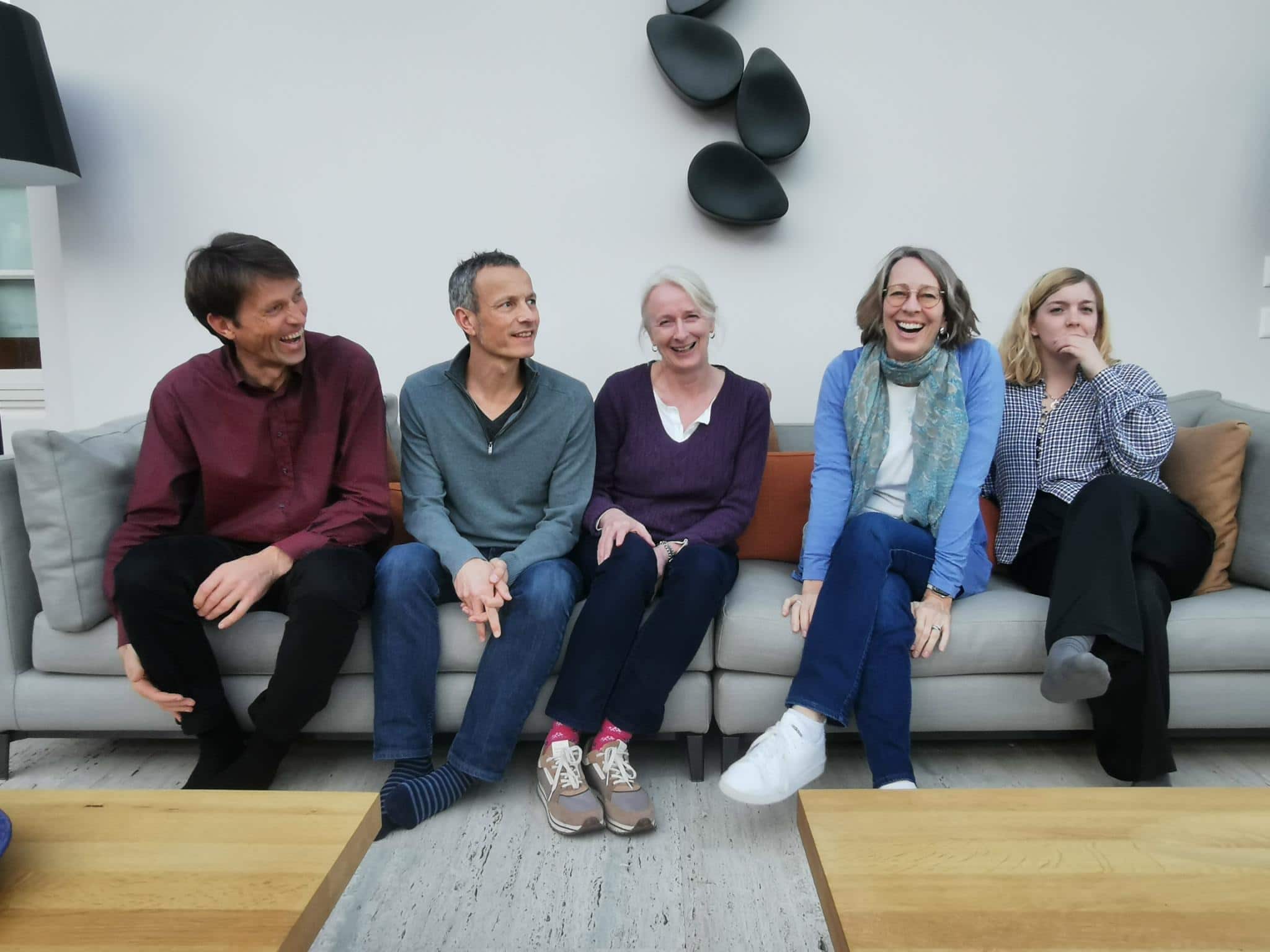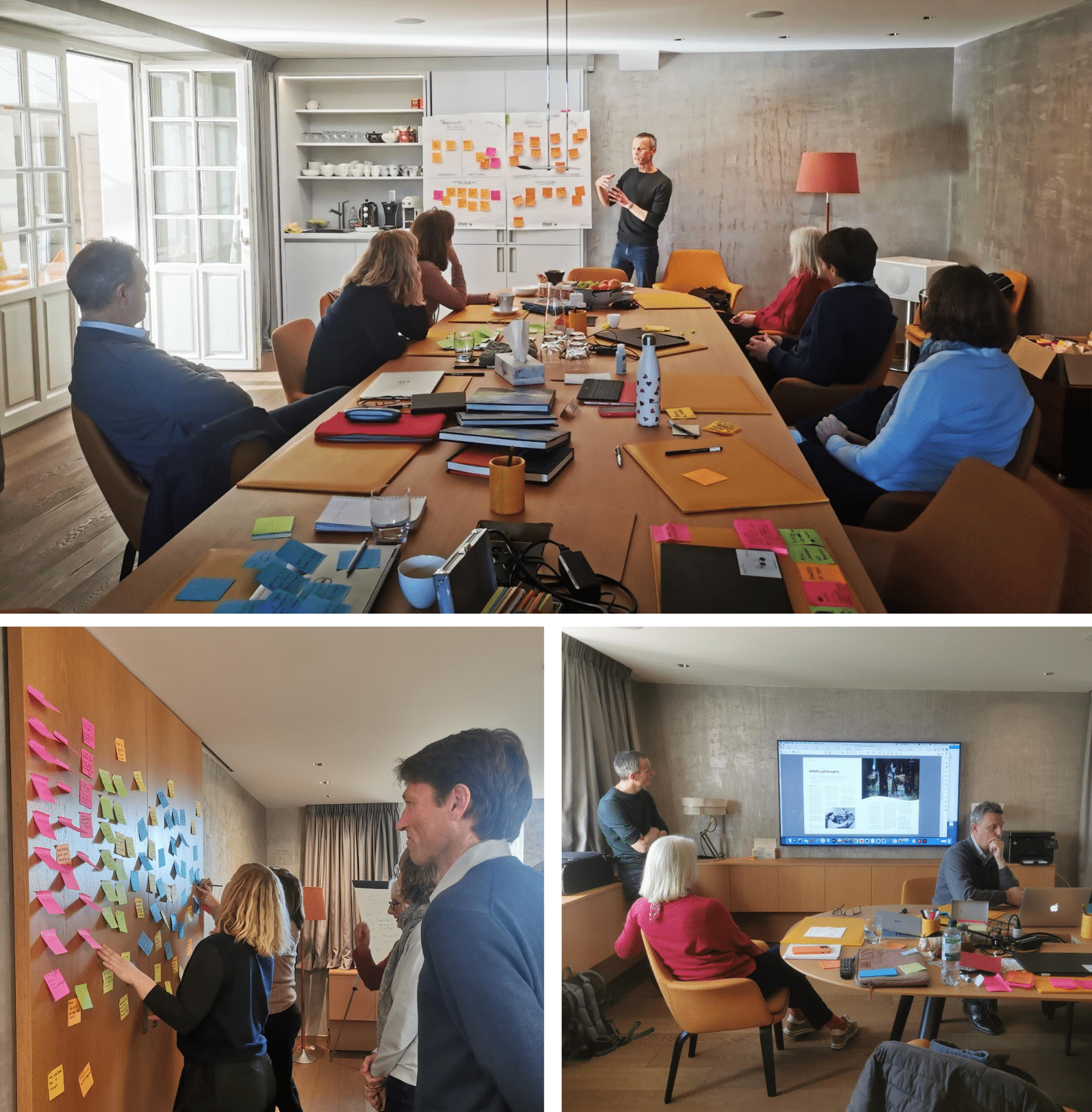A Concept Sprint for a book on MAVA’s legacy
In February 2022 we had the pleasure of working with colleagues from the MAVA Foundation again in a beautiful location on the shores of Lake Geneva. After sprinting two books about the foundation’s approach to strategic partnerships and its relatively high level of engagement as a donor last year, this time we met for a new format: a Book Concept Sprint. In only two days the participants developed the vision, concept and structure for a book about MAVA’s legacy, to have it approved by the board before the actual writing of the book.

Pic 1: The participants of the Concept Sprint (photo credits: Karina Piersig)
A book to be proud of
MAVA Foundation is a family-based philanthropic foundation based in Switzerland which was founded by Luc Hoffman in 1994. Since then, the foundation’s mission has been to conserve biodiversity by supporting the resilience of it’s partners so they can build a dynamic conservation community. With its final closing in 2023 in mind, the foundation wants to produce a book that brings the MAVA community together to celebrate their achievements and successes since the foundation was created.
The writing of the book was commissioned to the communications agency Touchline and placed in the hands of copywriter Catherine Finch. In order for her to start work, the MAVA colleagues had to agree on the direction the book should go. Based on their experiences from the two Book Sprints we had already facilitated last year, MAVA approached us to design a workshop to develop the concept for the legacy book.
We needed to find a way to clearly identify what we wanted to say in our book. There were emerging ideas that came from left and right but it just wouldn’t come together as one whole so we thought that the Book Sprints methodology would actually force us to really come down to conclusions, decisions and a consensus how that book should look like and what the main content areas should be. [Holger Schmid, Program Director at MAVA Foundation]
Sprinting a book concept
During the 2-days the participants developed a shared vision and the objectives for the book, agreed on the target audience, the style and scope of the book, brainstormed and mapped out the content, developed a table of content and created detailed outlines for each chapter.
Catherine, the copywriter, was there, as was Adam, the book’s project manager. We were able to discuss the basics of the style of the book with them and give feedback on their design proposals. All participants agreed that the book should feel precious to hold, but not inaccessible. The design choices should be elegant but understated. Photography should stand out and speak for itself and text should have space to breathe.
In the short time Catherine had already created draft texts from some chapter outlines, which were commented on by the participants. She managed to turn the bullet point from a rather technical style into a friendly, less formal and clear language from the perspective of a neutral observer.

Pic 2: Participants discussing the book objectives, brainstrorming content, reviewing design proposals (photo credits: Karina Piersig)
The vision for the book is ambitious: to evoke a strong sense of pride from the Hoffman family members, the partner organisations, the staff members and the various collaborators involved. It is the goal to unlock their stories, experiences and memories and to convey their passion and enthusiasm from the years of collaboration. The book will capture MAVA’s rich history including the lessons learned along the way and immerse the reader in the special environments MAVA protects.
The Concept Sprint leaves both parties confident that the book objectives will be achieved and with a process that guides the next steps. We are proud and grateful to have been asked to contribute to the making of this book and we can’t wait to hold it in our hands.
